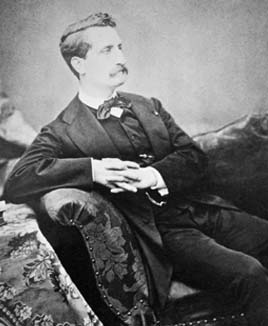


 تاريخ الرياضيات
تاريخ الرياضيات
 الرياضيات في الحضارات المختلفة
الرياضيات في الحضارات المختلفة 
 الرياضيات المتقطعة
الرياضيات المتقطعة
 الجبر
الجبر
 الهندسة
الهندسة 
 المعادلات التفاضلية و التكاملية
المعادلات التفاضلية و التكاملية 
 التحليل
التحليل
 علماء الرياضيات
علماء الرياضيات |
Read More
Date: 19-12-2016
Date: 19-12-2016
Date: 22-12-2016
|
Died: 11 December 1906 in Paris, France

Amédée Mannheim entered the École Polytechnique in Paris in 1848 at the age of 17. Two years later he went to Metz where he attended the École d'Application.
Although slide rules existed before Mannheim's time, invented by Oughtred and Gunter and others, it was Mannheim who standardised the modern version of the slide rule which was in common use until pocket calculators took over a few years ago. It was while he was a student at Metz that the ideas for this slide rule came to Mannheim.
I [EFR] purchased a slide rule of the Mannheim type when I was at school and my parents paid 5 pounds for it. That would be the equivalent of perhaps 100 pounds today so the calculator has not only given us a better calculating tool but also a much cheaper one. However, I still have the slide rule and treasure it, while I have thrown out all my early calculators.
After graduating from the École d'Application in Metz, Mannheim became an officer of the French artillery. After several years in the military, Mannheim was appointed to the École Polytechnique in Paris, while continuing his army career. His first appointment at the École Polytechnique was as a répétiteur in 1859, then in 1863 he was appointed as an examiner. In the following year Mannheim was appointed as Professor of Descriptive Geometry at the École Polytechnique. Koppelman writes in [1]:-
He was a dedicated and popular teacher, strongly devoted to the École Polytechnique, and was one of the founders of the Société Amicale des Anciens Elèves de l'École.
Mannheim retired from his army post in 1890, having attained the rank of colonel in the engineering corps. He continued teaching at the École Polytechnique until he retired in 1901 at the age of 70.
He made numerous contributions to geometry and for his outstanding contributions to the subject he was awarded the Poncelet Prize of the Académie des Sciences in 1872. He studied the polar reciprocal transformation introduced by Chasles and applied his results to kinetic geometry. Mannheim's own definition of kinetic geometry considered it to be the study of motion of a figure without reference to any forces, time or other properties external to the figure. Mannheim's work on the exact synthesis of mechanisms is studied in [6].
He also studied surfaces, in particular Fresnel's wave surfaces. The paper [5] studies this topic of his work in detail.
Articles:



|
|
|
|
مخاطر عدم علاج ارتفاع ضغط الدم
|
|
|
|
|
|
|
اختراق جديد في علاج سرطان البروستات العدواني
|
|
|
|
|
|
|
مدرسة دار العلم.. صرح علميّ متميز في كربلاء لنشر علوم أهل البيت (عليهم السلام)
|
|
|